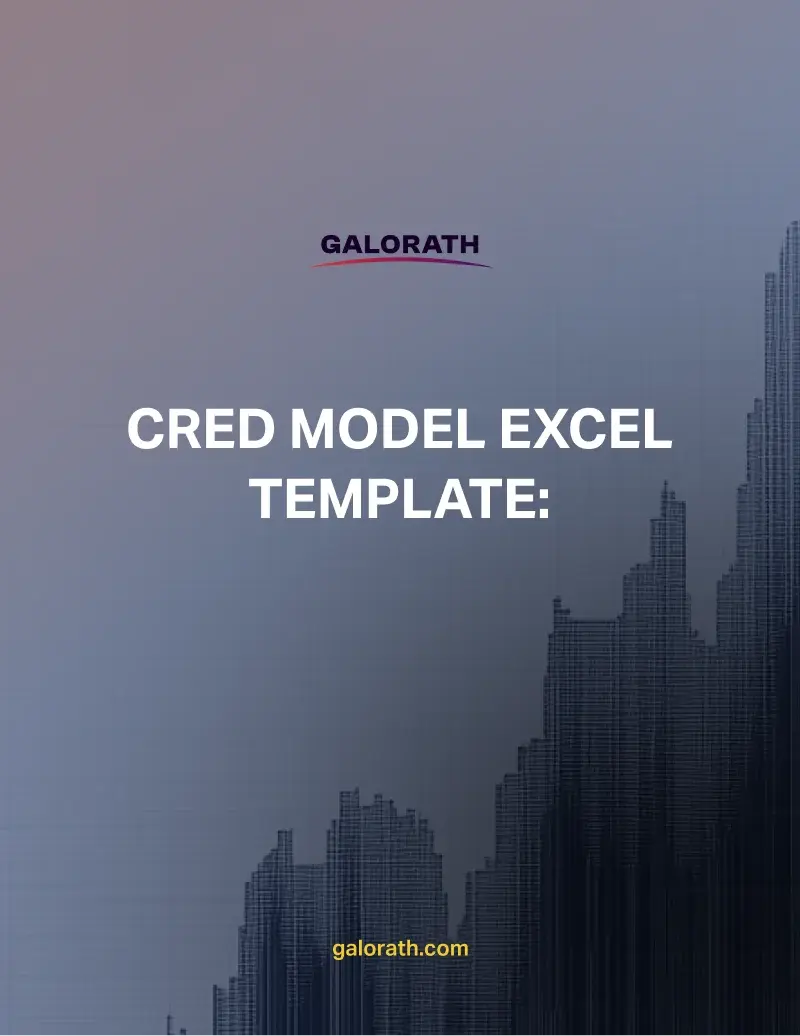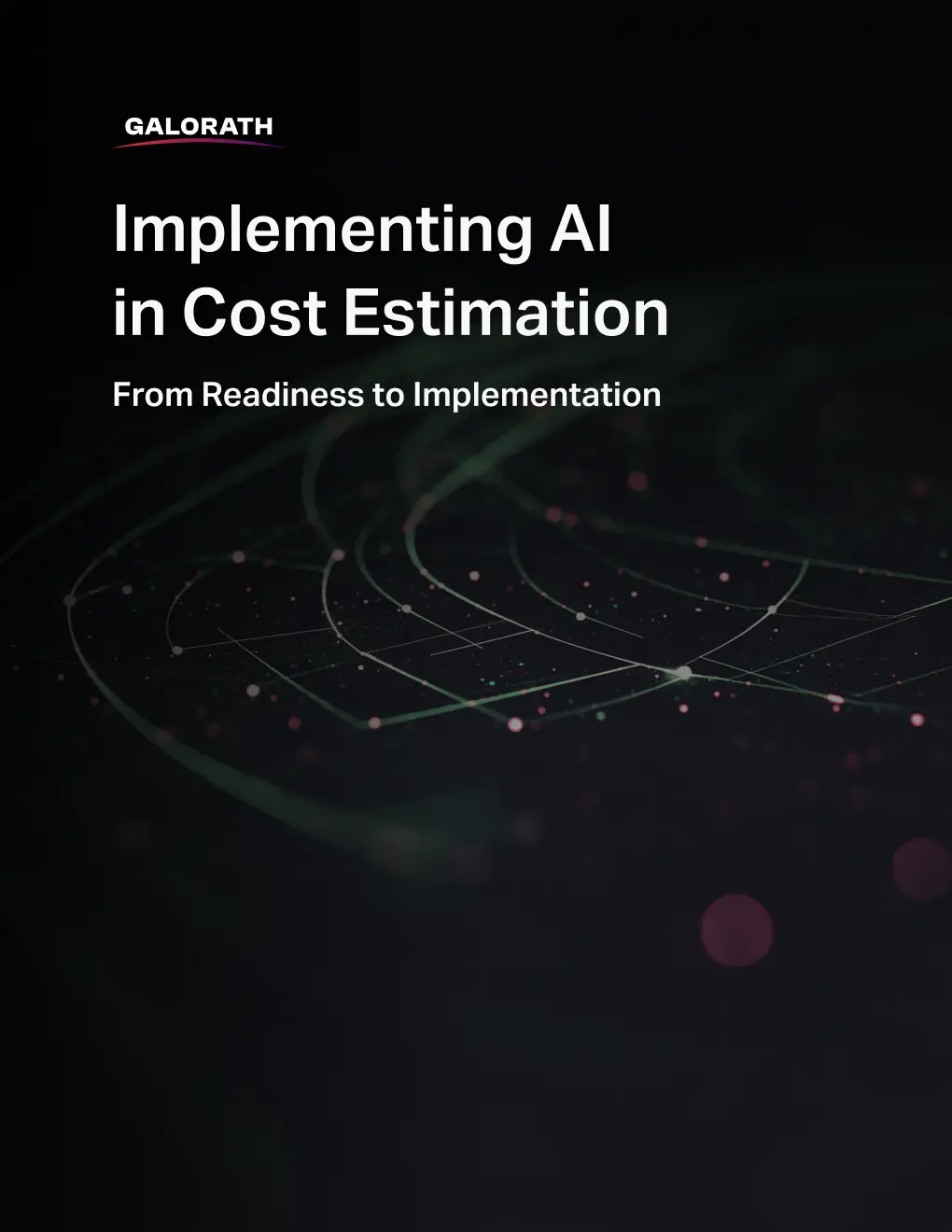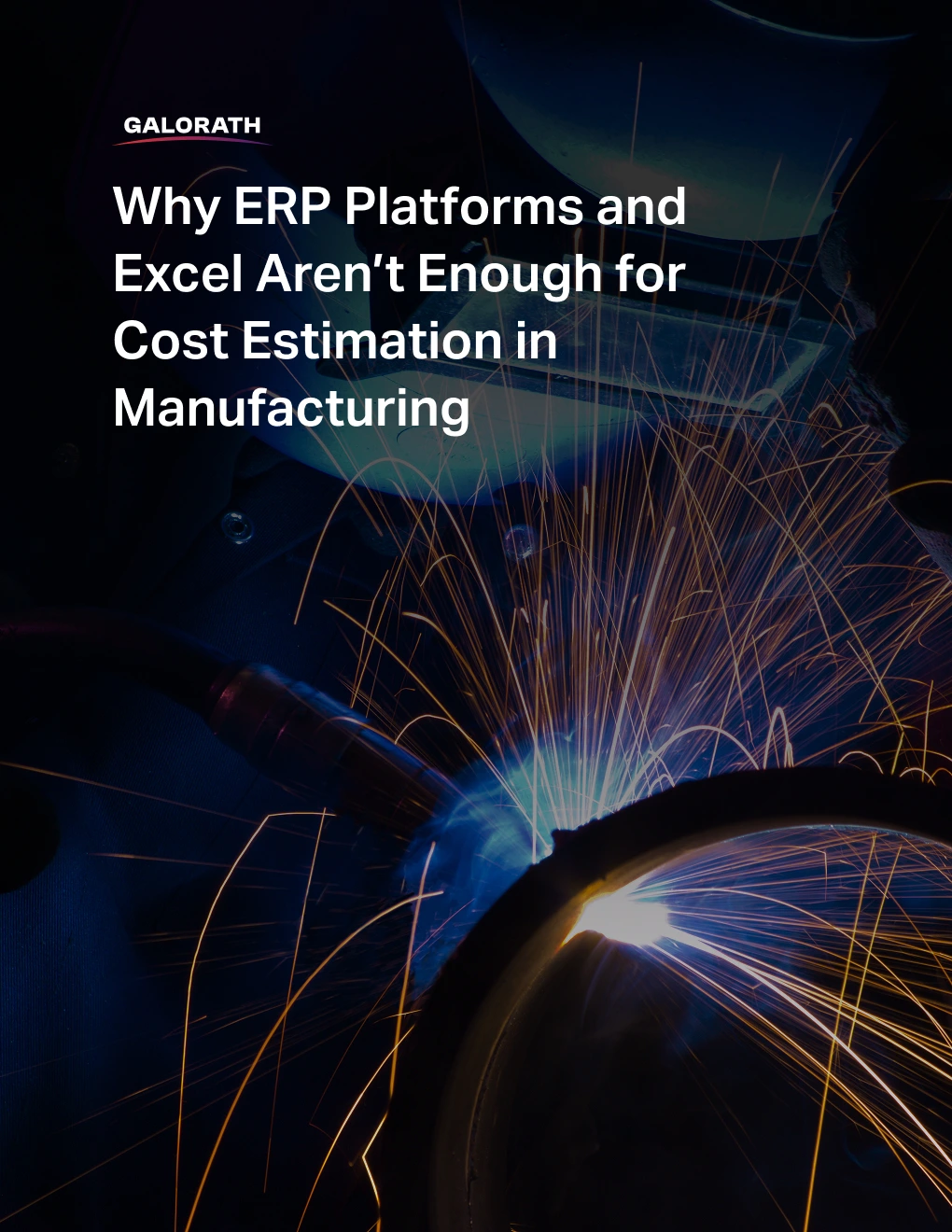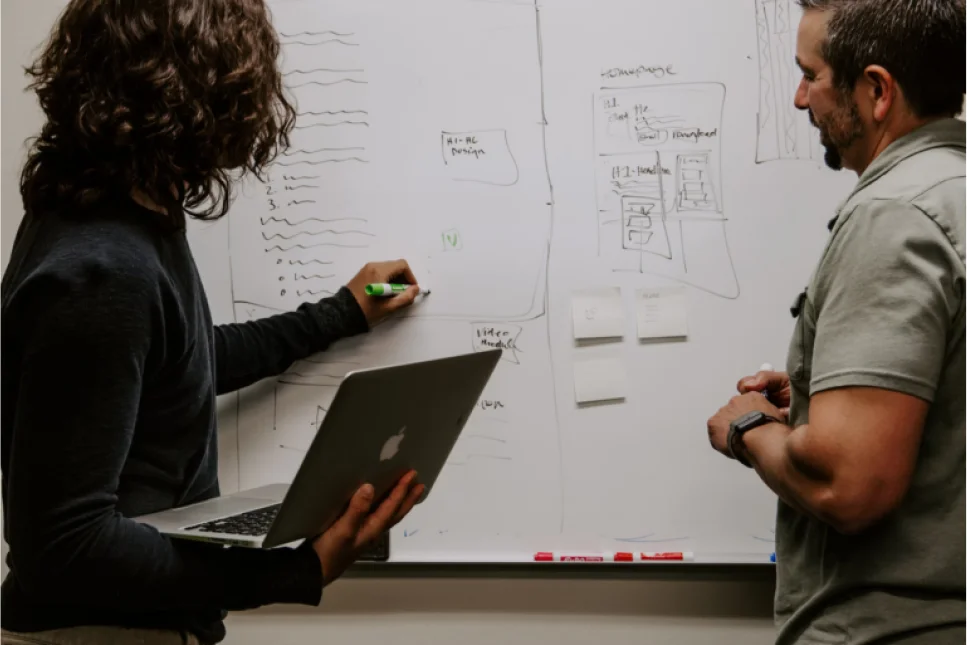Mastering Cost Risk with the CRED Model: A New Approach to Managing Uncertainty
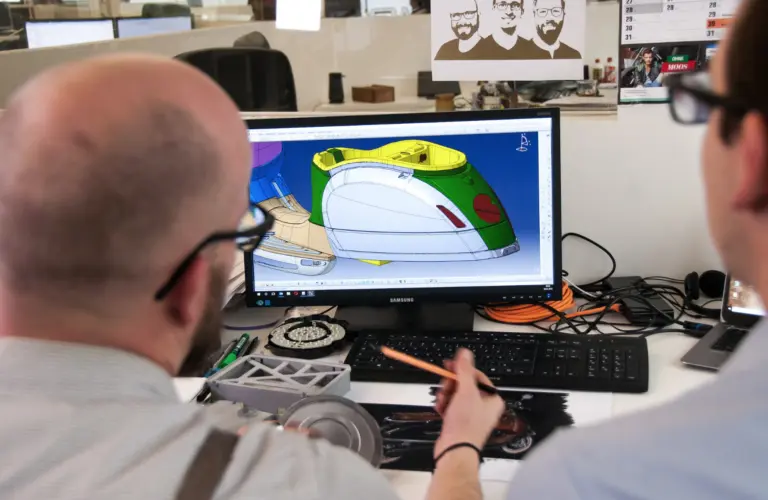
Parametric modeling plays a pivotal role in advancing project planning, design processes, cost estimation, and strategic decision-making. By employing mathematical models grounded in historical data, it provides precise forecasting for a wide range of industries and applications.
Table of Contents
What is Parametric Modeling?
Parametric modeling is a statistical approach that uses algorithms to analyze historical data, establish relationships between variables, and predict outcomes. This method helps with making data-driven decisions by understanding how changes in key variables and parameters affect the final results.
For instance, in project management and cost estimation, variables like labor costs, material prices, or project timelines can impact the overall budget and delivery schedule. By using parametric modeling, our SEER software, can estimate these factors more accurately and reduce the risk of unexpected expenses and delays.
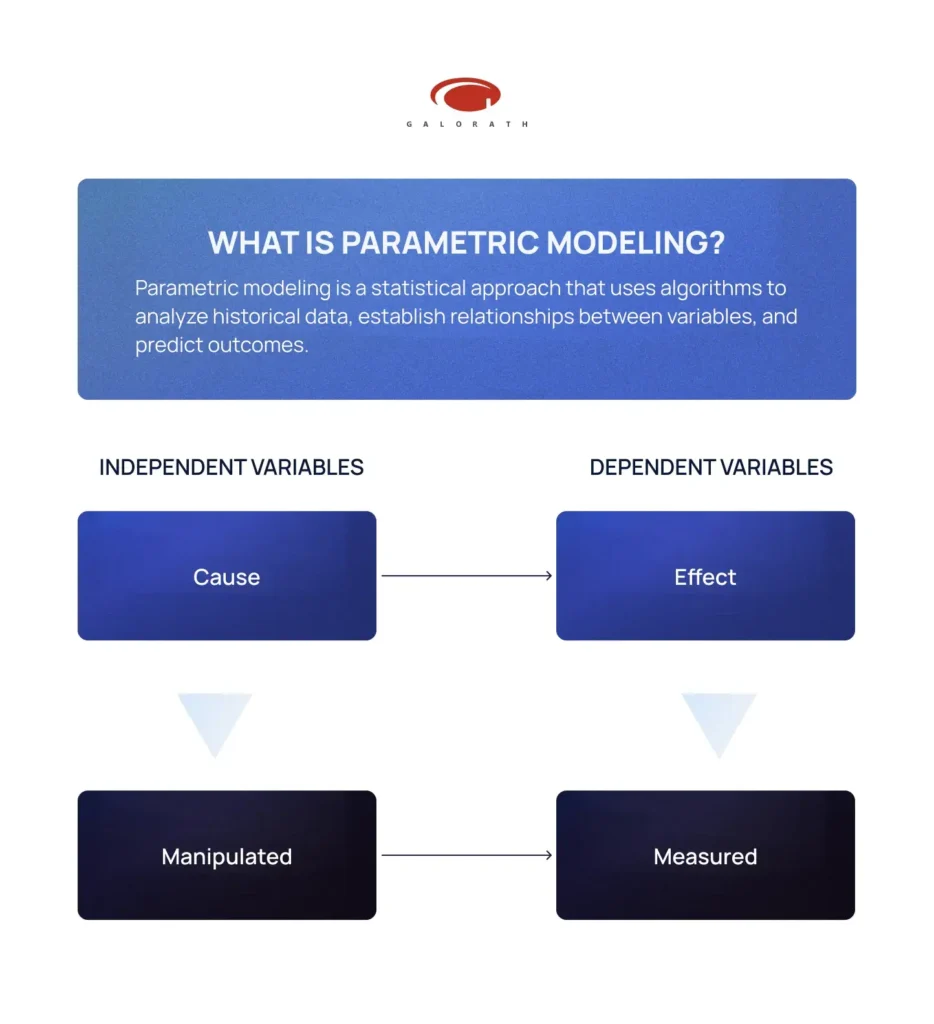
In modern architectural design and 3D modeling, parametric modeling is very significant as it enables architects and designers to set parameters that govern building and model elements. This facilitates dynamic responses to changes in design, geometry, shape, scale, or other design constraints, ultimately leading to optimized architectural and 3D model outcomes.
The Science Behind Parametric Modeling
To understand how parametric modeling works, it’s essential to examine the core components of these models. They typically consist of:
- Independent Variables: Factors or input parameters that influence the outcome, such as labor costs or raw material prices.
- Dependent Variables: The outcome that the model seeks to predict, like total project cost or delivery time.
- Statistical Relationships: Equations that describe how changes in independent variables affect dependent variables.
By continuously refining relationships through calibration and computer algorithms, the accuracy of forecasts improves, making parametric models indispensable for complex projects where precision is key.
The Fundamentals of Parametric Models
The Fundamentals of Parametric Models
At its core, parametric modeling relies on data to create a model that forecasts outcomes based on variable inputs. Here’s how the process of creating a model typically works:
- Data Collection: The first step involves gathering historical data relevant to the project or task. This data forms the basis for developing a model that predicts future outcomes. The more extensive and accurate the data, the better the model’s accuracy.
- Model Development: Using statistical techniques, analysts identify correlations between variables. For example, how does a change in labor rates affect total project costs? The goal is to quantify these relationships to create complex and reliable forecasting tools.
- Calibration: Models need periodic adjustments to account for new data or changes in project scope. Calibration ensures that predictions remain relevant over time, allowing organizations to refine their estimates as conditions change.
- Prediction: Once the model is developed and calibrated, it can be used to forecast outcomes for new projects or scenarios. By inputting specific variables, organizations can predict costs, timelines, and resource needs.
This systematic approach of using a parametric model offers a more reliable way to predict outcomes compared to traditional estimation methods, which may rely heavily on assumptions or guesswork.
Applications of Parametric Modeling Across Industries
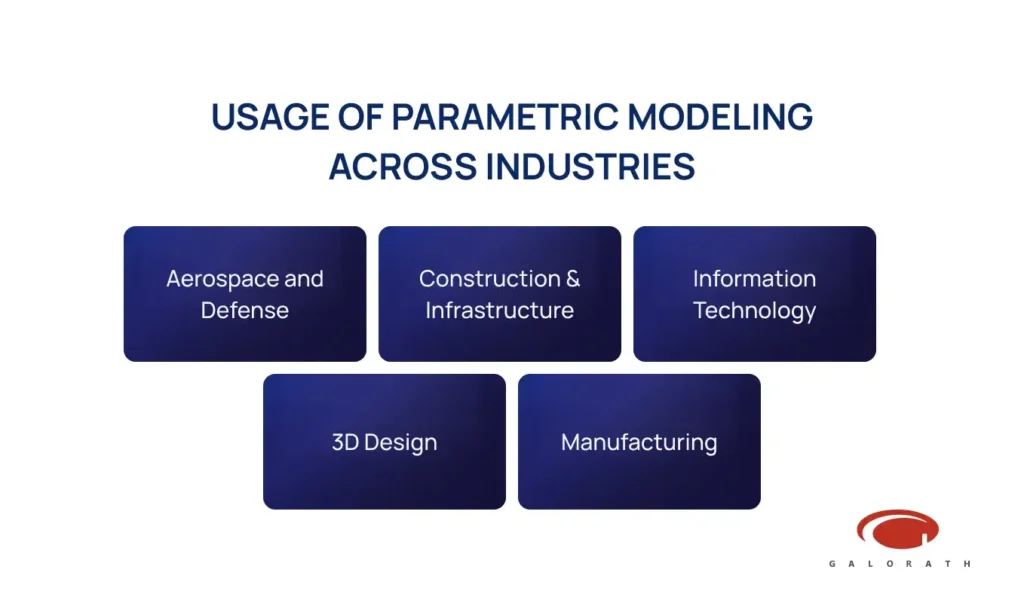
Parametric modeling is widely used across sectors that require precise design estimation, cost estimation, resource allocation, and timeline management. Let’s look at how different industries benefit:
- Aerospace and Defense: The aerospace industry has complex systems that require precise budgeting and scheduling. Parametric modeling helps defense contractors forecast costs for developing aircraft, satellites, and other defense systems, ensuring projects remain on track.
- Construction and Infrastructure Development: Construction firms use parametric models to plan budgets and allocate resources for infrastructure projects. By forecasting the costs of materials, labor, and other resources, firms can reduce delays and prevent budget overruns.
- Information Technology and Software Development: In software development, parametric models help teams estimate the time and resources required for new projects. These models allow companies to set realistic timelines and budgets, ensuring projects are delivered on time.
- 3D Design: Parametric modeling is extensively used in 3D design and animation to create digital models and model geometry. By defining parameters and relationships, designers can easily modify and adapt models to fit specific design constraints and requirements.
- Manufacturing and Supply Chain Management: Manufacturers use parametric modeling to optimize production schedules, forecast demand, and reduce waste. By accurately predicting the resources needed for production, companies can streamline operations and reduce costs.
Parametric Design: What is it and where is it used?
Parametric design is a design technique that uses mathematical equations to create complex relationships between different parts of a design. These relationships, or parameters, allow designers to create and edit geometry designs quickly and efficiently.
For example, changing a single parameter on a solid model, such as the length of a component, can automatically update all related dimensions and features of the entire shape, ensuring that the design remains consistent and accurate.
Parametric design is widely used in fields like architecture, product design, automotive, and aerospace to optimize structures, improve efficiency, and enable rapid customization. It empowers industries to adapt designs swiftly by adjusting parameters, enhancing precision, flexibility, and cost-effectiveness in complex projects.
One of the key principles of parametric design is the concept of design intent. Design intent refers to the underlying logic and rules that dictate how a design should behave. By capturing design intent, parametric modeling software can ensure that changes to one part of a model automatically propagate to other related parts, maintaining the overall integrity of the design.
This ability to create models based on predefined rules makes parametric modeling a powerful tool for designers and engineers.
Which Software Leverage Parametric Modeling?
From mechanical engineering and product design to cost estimation and project planning, parametric modeling is utilized in different software solutions for various purposes that demand adaptability and accuracy.
3D Parametric Modeling Software Solutions
Parametric modeling software is a type of computer-aided design (CAD) tool that allows designers and engineers to create digital models by defining parameters and relationships between different design elements. These software programs leverage mathematical equations and algorithms to define the connection between different parts of a design, allowing users to models quickly and efficiently.
Some of the most popular parametric modeling software includes Autodesk Inventor, SolidWorks, and CATIA.
For example, Autodesk Inventor provides tools for 3D mechanical design, simulation, and visualization, while SolidWorks offers features for product design, simulation, and data management. CATIA, on the other hand, is known for its advanced capabilities in aerospace and automotive design.
Leveraging Parametric Modeling for Cost Estimation
SEER by Galorath is a powerful software suite that applies parametric modeling techniques to streamline cost estimation and project planning. Unlike traditional design software, SEER uses parametric principles to analyze historical data and key parameters, allowing organizations to forecast costs and timelines with a high degree of accuracy.
It enables companies in industries like aerospace, defense, and engineering to generate precise cost estimates for hardware, software, and system engineering projects. By adjusting variables and leveraging predictive models, SEER helps users anticipate project outcomes, optimize budgets, and make informed decisions early in the planning process.
The Key Benefits of Using Parametric Modeling
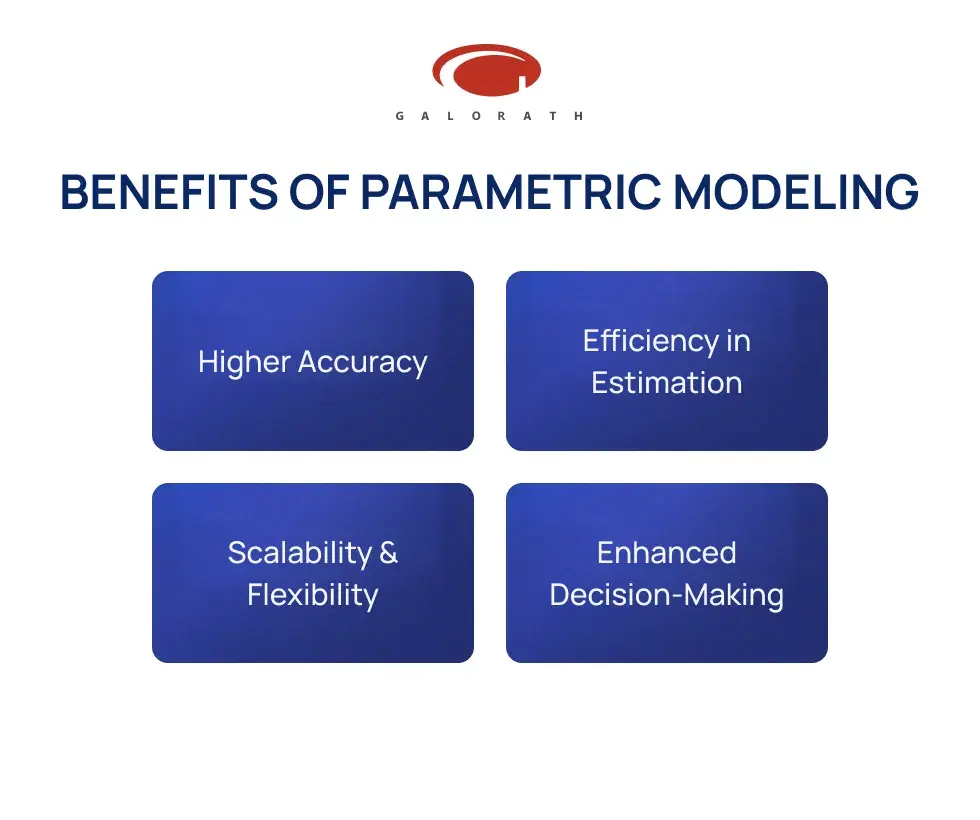
The growing adoption of parametric modeling is driven by its ability to improve project planning and resource management. Here are some of the primary benefits:
- Higher Accuracy: Parametric models reduce uncertainty by using data to generate precise estimates. This minimizes the risk of cost overruns and schedule delays, especially for large projects with multiple dependencies.
- Efficiency in Estimation: Automating the estimation process saves time and resources. Traditional cost estimation can be labor-intensive, while parametric modeling streamlines the process by analyzing existing data, reducing the manual workload.
- Scalability and Flexibility: Parametric models are adaptable. They can be used for projects of varying sizes, from small software initiatives to large infrastructure projects. This flexibility makes them ideal for organizations that handle diverse projects.
- Enhanced Decision-Making: By using data to drive decisions, organizations can optimize resource allocation, prioritize tasks, and adjust plans based on more accurate forecasts. This leads to better project outcomes and improved efficiency.
Parametric vs Direct Modeling
Direct modeling is a geometric-based modeling method that provides designers with the flexibility to interact directly with the model’s geometry. It enables quick and intuitive modifications without the need for predefined constraints or parameters, making it particularly advantageous for conceptual designs or organic forms.
Direct modeling approach allows for rapid prototyping and exploration of various design concepts, offering a more hands-on experience in the early stages of the design process.
The primary differences between parametric and direct modeling lie in their approach to design and geometry modification. Parametric modeling captures design intent by defining parameters and constraints, ensuring that any changes automatically update related elements, maintaining the model’s integrity. This makes it ideal for projects requiring precision and automation.
In contrast, direct modeling emphasizes flexibility and speed, allowing easily modified adjustments designer can do without the constraints of predefined parameters. While parametric modeling is suited for detailed engineering and manufacturing processes, a key advantage of direct modeling is in situations where rapid iteration and conceptual exploration are needed.
Parametric vs Nonparametric Models
Parametric and nonparametric modeling are two distinct approaches in statistical analysis and computer aided design. Parametric models rely on predefined parameters and equations to create models, capturing design intent and ensuring that changes automatically update related elements.
In contrast, nonparametric models do not assume a specific form for the model’s distribution, allowing for greater flexibility in capturing complex relationships within data. This approach is beneficial when dealing with data that doesn’t fit traditional parametric assumptions, providing a more adaptable framework for analysis.
While parametric models are efficient for well-defined tasks with clear constraints, nonparametric models offer the versatility needed for exploratory data analysis and situations where the underlying structure of the data is unknown.
Real-World Case Studies: Parametric Modeling in Action
To better understand how parametric modeling drives success, let’s explore examples of how leading companies in various sectors have applied these techniques.
- Boeing: Aerospace Cost Estimation Boeing, one of the largest aerospace manufacturers, uses parametric modeling to estimate the costs of developing new aircraft. By leveraging historical data on past projects, Boeing can forecast expenses related to materials, labor, and technology investments. This approach has enabled the company to optimize resource allocation, reduce development timelines, and control costs more effectively.
- Bechtel: Infrastructure and Construction Bechtel, a global leader in construction, uses parametric modeling to streamline project planning. For large-scale infrastructure projects, such as bridges and highways, Bechtel uses parametric models to predict costs, identify potential risks, and allocate resources efficiently. This has resulted in more accurate budgets, reduced delays, and improved client satisfaction.
- IBM: Software Development In the software industry, IBM applies parametric modeling to estimate the resources needed for software development projects. By analyzing variables such as code complexity, team size, and development time, IBM can set realistic project schedules and budgets. This approach has improved project delivery timelines and client outcomes.
- Automotive Industry: Automotive manufacturers face constant pressure to reduce costs while maintaining quality. By using parametric models, these companies can predict the costs of new vehicle design elements, complex geometries, including materials, labor, and supply chain factors. This allows them to make data-driven decisions, optimizing designs for cost efficiency without sacrificing performance.
Overcoming Common Challenges in Parametric Modeling
While parametric modeling is powerful, there are challenges that organizations need to address to maximize its effectiveness. Here are a few common obstacles and strategies for overcoming them:
- Data Availability and Consistency: In some industries, collecting comprehensive historical data can be challenging due to inconsistent record-keeping. To overcome this, organizations can start with smaller, focused datasets and expand as more data becomes available.
- Complexity of Models: Developing a parametric model can be complex, especially for projects with numerous variables. Simplifying models by focusing on key variables can help organizations get started. Over time, they can gradually add complexity as their understanding improves.
- Resistance to Change: Teams accustomed to traditional estimation methods may resist adopting parametric modeling. Clear communication and training can help teams understand the benefits, easing the transition. Providing real-world examples of success can also build confidence in the new approach.
- Keeping Models Up to Date: A model is only as good as its latest calibration. Organizations should establish processes for regular updates, ensuring that models reflect the most current data and market conditions. Using automated calibration tools can simplify this process.
Parametric modeling represents a paradigm shift in how industries approach design, cost estimation, and strategic planning. By leveraging data-driven algorithms to identify relationships between variables, it enhances precision, efficiency, and scalability across sectors such as construction, aerospace, software development, and manufacturing.
As organizations increasingly adopt this approach, the focus will shift to overcoming challenges like data accuracy, model complexity, and change management. Those who successfully integrate parametric modeling into their workflows will gain a competitive advantage, driving innovation and optimizing project outcomes in constantly evolving markets.
10 Step Estimation Process Sample Checklist
View our 10 Step Estimating Process Checklist. This checklist should be tuned to the individual company’s needs and suggestions.
Estimating Total Cost of Ownership (TCO)
Find out how you can use Total Cost of Ownership (TCO) model to create an estimate which includes all the costs generated over the useful life of a given application.
Should Cost Analysis
Learn how Should-Cost Analysis can identify savings opportunities and drive cost efficiency in procurement and manufacturing processes.
ROM Estimate: The First Step Towards a Detailed Project Plan
Find out what ROM (rough order of magnitude) estimate is and why is it a crucial element of every project planning cycle.
Software Maintenance Cost
Find out why accurate estimation of software maintenance costs is critical to proper project management, and how it can make up to roughly 75% of the TCO.




